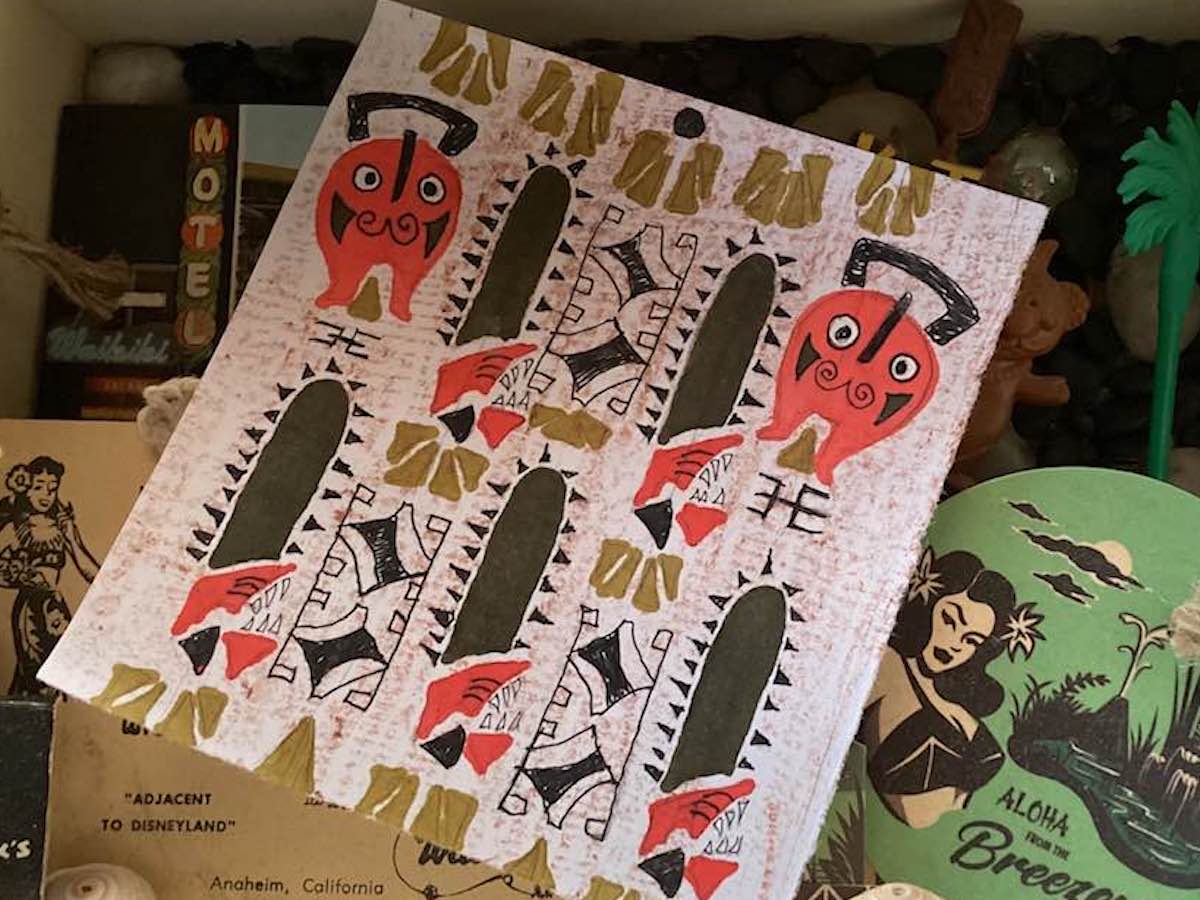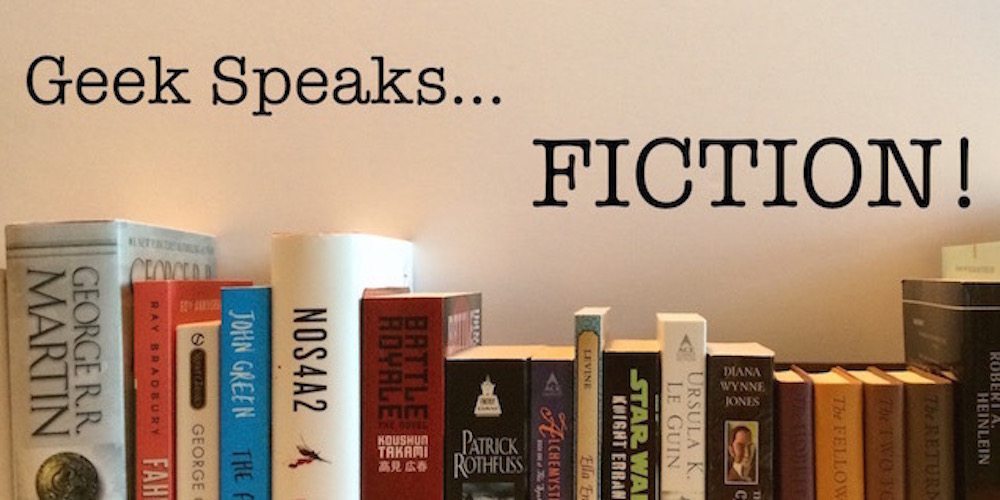This summer’s Be the Artist series asks the question, “But is it art?”
Ok, where do I even begin to talk about the Tiki culture and its popular style movement in the mid-twentieth century?
There’s the fashion! There’s the food and drinks! There’s the décor, and there are the destination attractions, books and movies.
There is far too much to cover, and so many pioneers of the style movement, there is no way to cover everything. I will simply give you a very quick (and admittedly incomplete) version of why it took off in the mid-century in the United States, consulting the Book of Tiki by Sven A Kirsten.
The love of “South Seas fiction” started before the twentieth century, when travel to far away places wasn’t as easy as it is today, with books like Herman Melville’s Typee giving people of glimpse of this world.
Language experts have found word “Tiki” may have several possible origins, particularly from the Maori language. It likely means “first man” or a representation of man. There’s another explanation: “Tiki” was the god of the artists. That makes sense to me, whether true or not, as Tiki custom needs artistic minds. The Tiki style isn’t merely a Hawaiian style, but takes from many Pacific cultures from Polynesia to New Zealand with some Asian and African influences as well.

After World War II, in the 50s and 60s the trend of “Polynesian Pop” really took off in the United States. The rationing, the uncertainty, the fear of wartime was over, and people wanted celebration, rest, escapism, and color!
Establishments like Trader Vic’s, Don the Beachcomber, and Tiki Bob’s popped up all over, many along the West Coast, and Walt Disney created his animatronics aviary “The Enchanted Tiki Room” at this time. Tiki style was everywhere. Celebrities like Elvis Presley bought art from Tiki makers like Witco for his Graceland home, and the founders of Oceanic Arts were on their way to becoming the foremost go-to for Tiki inspired props and designs.
…And that is only scratching the surface of the Tiki mug.
Is Tiki style “art”? Looking at the cool shift towards the mid-century aesthetics, of course you would say “yes,” but it is the subject of controversy from those who have called it everything from culturally inaccurate to just plain tacky. Back in the 50s and 60s, some frowned upon it for promoting the atmosphere of drinking, dancing, and other unsavory activities.
Today, people around the world are rediscovering how fun much the immersive escapism of the Tiki Custom culture is for easing the mind and giving people an excuse enjoy a more relaxing lifestyle. Even if just for a weekend.
Fantasy Swatches
There are plenty of “geeked-out” Tiki patterns available on glasses, shirts, posters, and anything else that you can put Tiki art on. The Geeki Tikis line of pop culture Tiki mugs are everywhere, and retailers from Disney Store to Hot Topic will often carry Polynesian influenced pattern mixed with Marvel or Star Wars characters.
If there is so much out there already, what new is there to do? Plenty!
If there is a design in your head you haven’t created, it will be new. We’ve gone over this with the artist’s remarque project, remember?
However, if you have a new design idea you want to share, sometimes you need to present a small sample of it. So, for this project, we’ll come up with a sample of the next big pop culture inspired Tiki pattern.
This is a simple drawing exercise, but also a good way for me to share some basic Tiki inspired symbolism. Because one origin theory of the word “Tiki” may refer to the first man (or demigod creator of the first man), Tiki designs often symbolize features on a face or body such as eyes, nostrils, arms or legs, as well as features from animals such as flippers on turtles or wings on seabirds.
These aren’t always features arranged, as you would expect, but rather hidden among large patterns, like in tribal tattoo designs. There may be a hint of an eye or mouth among the patterns. There are some legends that say Tiki may be an embodiment of a deceased ancestor, so this makes perfect sense.
Use these ideas for some design inspiration when you draw your sample pattern. You’ll only need a plain piece of drawing paper, and some colored markers, crayons or pencils.
Are there any characters, movies, or themes that haven’t been explored (or properly explored in your opinion)? Right now, I am seeing many Halloween themes around, from classic monsters to 80s horror.

Find a couple of simple images that represent the design you want, and draw then on a piece of scrap paper until you get the look you want. Use very simple patterns and shapes for the images.
Now, on your sample “swatch” use a ruler to draw about three our four parallel lines.
Draw your images along those on those lines, but not directly next to each other.

Once you get the main images down, fill in the spaces in between with some Tiki inspired patterns. Here’s where the hidden features may come in to play. What feature or shape might symbolizes the character or images you chose?
When the basic drawings are complete, color them in. Don’t overdo it in the colors. Often, Tiki patterns take advantage of about three our four main colors.
Now, show them off to friend and ask if they recognize the patterns. Even if they don’t they can discover the cool hidden images.

If your sample is a success (or even if it isn’t), keep trying out more patterns. One thing about the mid-century pioneers of the Tiki phenomenon, persistence and variety are the key.
The mid-century Tiki customs were filled with immersive colorful fun, so take advantage of their over-the-top imaginations and bring to life some Tiki designs.


